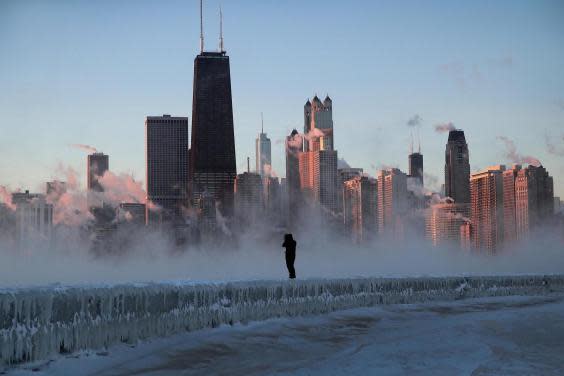Why is it so cold? Split in polar vortex brings historic deep freeze to US
The US is currently experiencing historically cold weather, with Chicago dropping to a low of around -23F (-30C) on Wednesday – but what is the cause of this extreme drop in temperature?
A split in the polar vortex has been identified as the cause of the bitter cold that continued to sweep parts of the country on Thursday.
The polar vortex is a mass of cold air that usually stays bottled up in the Arctic.
But when the split occurred, that air spilled and traveled much further south than usual, causing a painfully cold weater system that put much of the Midwest into a historic deep freeze.
Temperatures still tumbled to record lows in some places on Thursday, though the weather was expected to start easing into Friday.
Record-breaking cold hit northern Illinois early Thursday, when the temperature in Rockford dropped to -30F (-34C). The previous record in the city, northwest of Chicago, was -27F (-33C) on 10 January, 1982.
The blast of polar air that enveloped much of the Midwest on Wednesday closed schools and businesses and strained infrastructure with some of the lowest temperatures in a generation. The deep freeze snapped rail lines, canceled hundreds of flights and strained utilities.

Chicago dropped to a low of around -23F (-30C), slightly above the city's lowest-ever reading of -27F (-32C) from January 1985. Milwaukee had similar conditions. Minneapolis recorded -27F (-32C). Sioux Falls, South Dakota, saw -25F (-31C).
Wind chills reportedly made it feel like -50F (-45C) or worse.
At least twelve people have died in weather-related circumstances. Some died in weather-related traffic accidents, others from apparent exposure to the elements.
Additional reporting by agencies.
